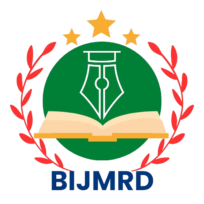Author: Susanta Kuila & Dr. Pankaj Kumar Paul
DOI Link: https://doi.org/10.70798/Bijmrd/020800012
Abstract: Aims/Purpose: This paper tried to assess the role of Vidyasagar in women’s education particularly of liberation movement in India. Vidyasagar was a symbol of women’s advancement in the nineteenth century. At the period, Vidyasagar worked tirelessly to ensure that women had equal rights as males in all sectors. Education can ensure women’s rights in society. Methodology: The historical method is used to confirm the truth of past occurrences and hence discover the causal relationship between current events by gaining knowledge from the past. Findings: Vidyasagar took significant steps to spread and encourage women’s education. Throughout his life, he attempted to demonstrate that women had an essential part in social, political, economic, and cultural affairs. At a young age, girls married older men. They became widows at a young age. He introduced widow marriage to alleviate the plight of these young females. He also attempted to raise public awareness of harmful traditions such as child marriage and polygamy. He believed that the fundamental reason for the deterioration of Indian women was a lack of meaningful education. So Vidyasagar established girl’s schools, a normal school for women’s education, and founded ‘NarisikshaVandar’ to keep girls’ schools open. In this essay, we will look at Vidyasagar’s role in reintroducing women to the mainstream and understanding their situation in the nineteenth century. Comments: Women can now move freely in society, establish themselves through proper education, and freely voice their opinions. When contemporary women are compared to nineteenth-century women, the true contrast becomes clear.
Keywords: Vidyasagar, Widow marriage, Polygamy, Women education, Narisiksha vandar, Women awakening.
Page No- 101-105
